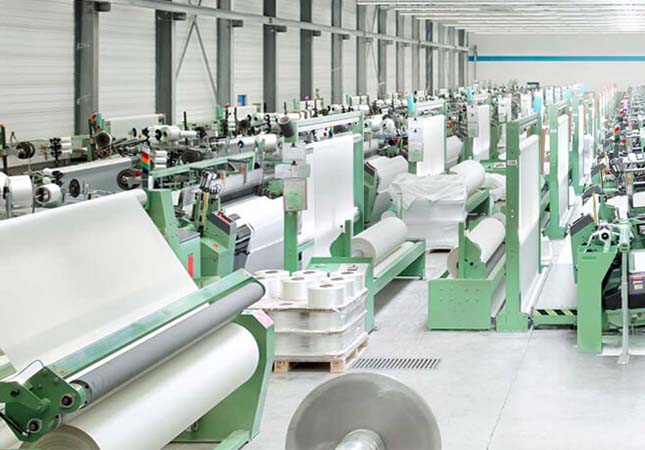As of 2021, the global textile industry had a worth of $961.5 billion. It is projected to surge to $1,414.6 billion by 2028, exhibiting a compound annual growth rate (CAGR) of 5.1% throughout the forecast period. The expansion of the textile industry can be accredited to various factors, including rising demand for textile goods in emerging economies, advancements in textile manufacturing technologies, and an increasing recognition of sustainable and environmentally-friendly textiles.

The Asia-Pacific region dominates the global textile market, commanding more than 50% of the market share. This can be attributed to several factors such as the region's substantial population, a burgeoning middle class, and competitive labor costs, all of which have contributed to its appeal as a prime textile manufacturing hub. Leading the pack in textile production and exportation is China, followed closely by India and Bangladesh.
When it comes to textile products, the apparel segment reigns supreme, capturing over 60% of the global market share. This is primarily driven by the escalating demand for trendy clothing and accessories in both developed and developing economies. Additionally, the textile industry encompasses other significant segments such as home textiles, technical textiles, and industrial textiles.
The textile industry has faced significant challenges due to the COVID-19 pandemic, including disruptions in global supply chains, reduced demand for textile products, and substantial financial losses for manufacturers. However, the industry has exhibited remarkable resilience by adapting to the changing circumstances. Many manufacturers have shifted their focus to producing personal protective equipment (PPE) and other essential items to fulfill the evolving needs of consumers during the pandemic.
In terms of emerging trends, sustainability and eco-friendliness have become paramount in the textile industry. Manufacturers are actively exploring alternative materials, adopting more efficient production processes, and implementing closed-loop production systems to minimize waste and reduce their environmental impact. Additionally, the industry is embracing digital technologies such as automation, artificial intelligence, and the internet of things (IoT) to enhance operational efficiency and optimize costs throughout the manufacturing process.
The global textile industry is a substantial and dynamic market, displaying considerable growth potential. Despite challenges like the COVID-19 pandemic and increasing competition from alternative materials, the industry is poised for continuous expansion and innovation in the years ahead.
The global market share of the textile industry encompasses several segments, including textile fiber, textile yarn, fabric, apparel, and home textile products. Here are estimations for the global market share of these segments in 2020, along with projections for 2022:
1. Textile Fiber
In 2020, polyester emerged as the largest segment of the textile fiber market, capturing around 50% of the global market share. Other fibers such as cotton, viscose, and nylon also held significant market shares. Looking ahead to 2022, the textile fiber market is anticipated to grow at a compound annual growth rate (CAGR) of approximately 5%. Polyester is expected to retain its dominance, with a market share of around 52%.
2. Textile Yarn
During 2020, the textile yarn market saw the cotton yarn segment take the lead with a global market share of approximately 35%. Noteworthy market shares were also held by other yarn types like polyester, viscose, and nylon. Moving forward to 2022, the textile yarn market is projected to experience growth at a compound annual growth rate (CAGR) of around 6%. Furthermore, the cotton yarn segment is expected to uphold its dominance with a market share of roughly 34%.
3. Fabric
In 2020, the fabric market saw the woven fabric segment emerge as the largest, commanding a global market share of approximately 44%. Other fabric types like knitted, non-woven, and technical textiles also held substantial market shares. Looking ahead to 2022, the fabric market is projected to experience growth at a compound annual growth rate (CAGR) of around 5%. Furthermore, the woven fabric segment is anticipated to retain its dominance, accounting for a market share of roughly 43%.
4. Apparel
In 2020, the apparel market witnessed the women's wear segment claim the top position, comprising approximately 50% of the global market share. Other segments such as men's wear, kid's wear, and sportswear also held significant market shares. Moving forward to 2022, the apparel market is projected to grow at a compound annual growth rate (CAGR) of around 5%. Furthermore, the women's wear segment is expected to retain its dominant position, encompassing a market share of roughly 49%.
5. Home Textile Products
In 2020, the home textile products market saw the bed linen segment secure the leading position, capturing a global market share of approximately 40%. Other notable products like curtains, towels, and carpets also held substantial market shares. Looking ahead to 2022, the home textile products market is projected to experience growth at a compound annual growth rate (CAGR) of around 4%. Furthermore, the bed linen segment is anticipated to maintain its dominant position, comprising a market share of roughly 39%.
It is crucial to acknowledge that these estimations may be subject to variations influenced by factors such as economic conditions, trade policies, and evolving consumer preferences.
SUNTECH Textile Machinery has the range of products encompasses almost all fabric types, including but not limited to pinking machine, loom machine, weaving machine, beam truck, fabric cutting machine, motorized beam trolley, beam storage, and fabric inspection machine. SUNTECH Textile Machinery continues to lead the textile industry with its innovative approach and extensive experience. We welcomes quotes and cooperation opportunities with open arms.




